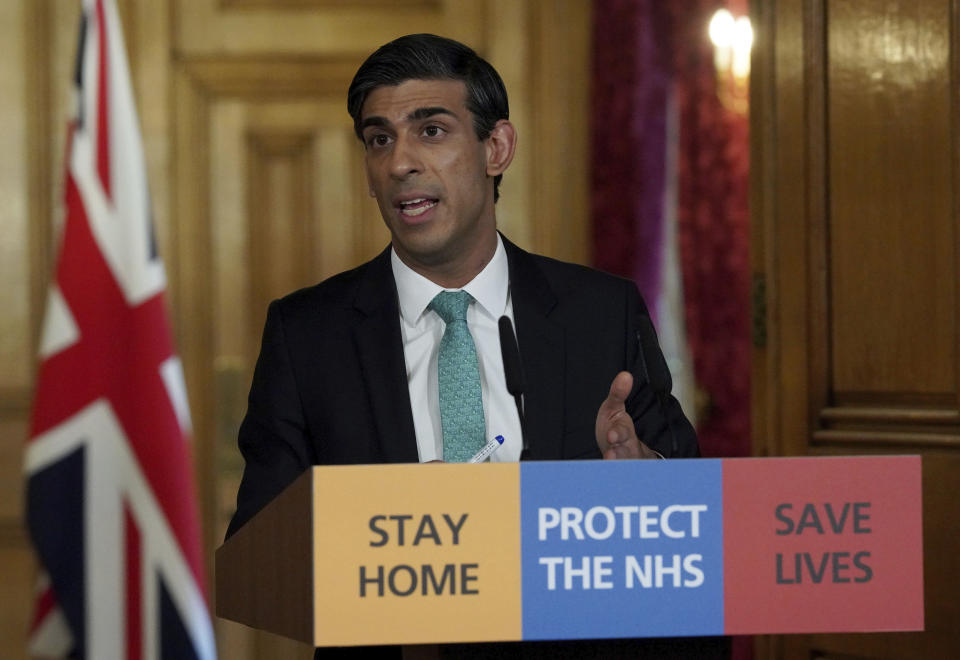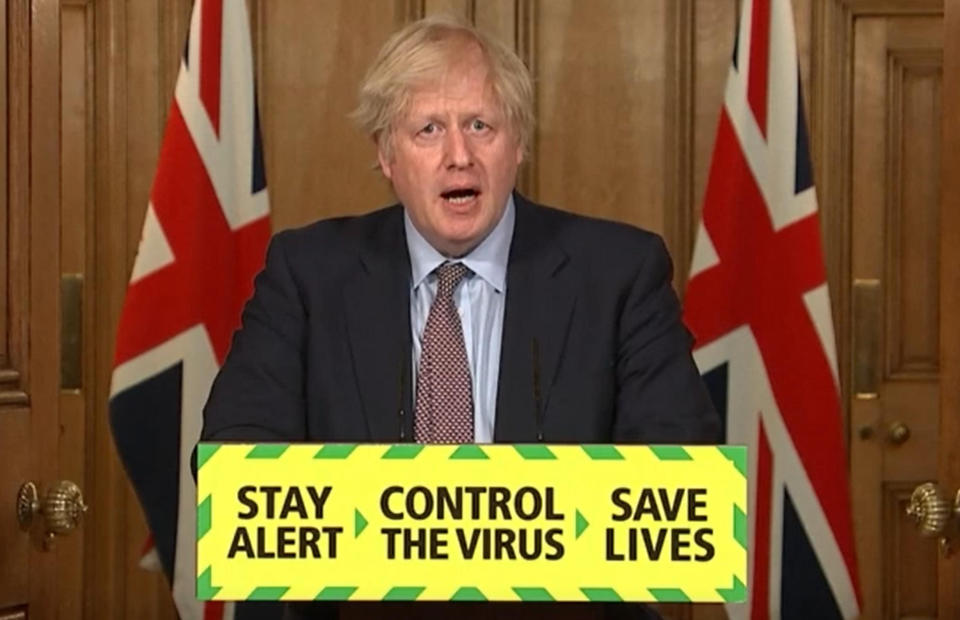Coronavirus: How UK government spends billions to support the economy
The UK government has mounted one of the most aggressive economic responses to the COVID-19 pandemic in the world, pledging billions of pounds to support businesses through the crisis.
UBS estimates the UK government has pledged the equivalent of 8.5% of GDP towards fighting the crisis, putting the UK behind only Singapore and Japan when it comes to the size of response relative to a country’s economy. Gareth Davies, head of the National Audit Office said, the scale of the government response has been “unprecedented in recent history.”
Both the National Audit Office and the Office for Budget Responsibility estimates the UK will spend around £120bn (£150bn) on the crisis this year alone. The spending is likely to push the UK’s budget deficit to close to £300bn in 2020.
Much of the spending is going towards supporting businesses. Here’s a round-up of the key schemes announced so far:
CBILS and CLBILS
One of the first programmes announced by the government was the coronavirus business interruption loan scheme (CBILS). Under the scheme, the government agreed to stand behind 80% of loans made to small and medium-sized businesses by banks. Companies can borrow up to £5m.
So far 45,843 businesses have borrowed £8.9bn under the scheme. 89,724 companies have applied.
Following complaints that larger businesses were falling through the cracks, the government launched the coronavirus large business interruption scheme (CLBILS). Companies with a turnover of more than £45m can borrow up to £200m under this programme. So far just 191 businesses have borrowed £1.1bn, although 579 firms have applied for cash.
Bounce Back loans
The most popular loan programme so far has been the Bounce Back scheme, which was launched last month. Almost 700,000 businesses have borrowed £21.3bn under the scheme.
Bounce Back loans were launched in response to criticism that the CBIL scheme was too slow to offer meaningful support. Banks still had to undertake traditional due diligence on CBILs, which slowed the lending process.

The government offers a 100% guarantee on Bounce Back loans, unlike the 80% of CBILs, which allows ‘light touch’ lending by banks. Lenders only carry out basic money laundering and fraud checks on applications.
However, while this leads to speedier lending, there are fears that the lack of affordability checks means the tax payer could face huge losses from the scheme in the future.
Businesses can borrow up to £50,000 under the Bounce Back scheme. Loans are fixed at a 2.5% interest rate over 6 years.
The Coronavirus Corporate Financing Facility
For businesses that need even more than the £200m offered under CLBILS, the government set up the coronavirus corporate financing facility (CCFF). The state agreed to stand behind “commercial paper” issued by big businesses — effectively offering state guarantees on money borrowed in financial markets.
Companies can issue up to £1bn in commercial paper under CCFF. Household names such as British Airways and EasyJet have used the scheme and at least £17bn has been raised through the programme.
The CCFF is run by the Bank of England on behalf of the Treasury.
Job retention scheme
Perhaps the highest-profile measure announced by the government has been the job retention scheme.
Under the scheme, companies can furlough staff who are not needed during the shutdown. The government will pay up to 80% of their wages to a maximum of £2,500 per month.
The idea of the scheme was to prevent a wave of layoffs as lockdown hit. The Treasury hopes keeping staff attached to employers will also allow the economy to quickly bounce back one restrictions are eased.

8.7 million people have been furloughed under the job retention scheme at a cost of £17.5bn. The scheme was originally meant to finish in May but has twice been extended and will now run till October. New entries will be closed from July and employers will have to start contributing to staff costs from August.
Self-employed income support scheme
Concerns were raised after the job retention scheme was launched that an estimated 5 million people were left out of the scheme, namely the UK’s large self-employed population.
The Treasury launched the self-employed income support scheme in response. People who work for themselves can claim one-off grants of up to £7,500 to cover lost income. The amount you can claim is 80% of your average monthly profits.
The scheme was extended last month to reflect the length of the lockdown. Self-employed people can now claim a second grant of up to £6,570 from August.
Sick pay
The Coronavirus Statutory Sick Pay Rebate Scheme allows small businesses to claim back sick pay for staff off work with COVID-19. The scheme only covers businesses with fewer than 250 employees and only covers sick pay for a maximum of two weeks per person.
VAT deferral
Businesses have been allowed to defer VAT payments due between 20 March and 30 June. So far 869,000 payments worth £22.4bn have been deferred.
Rates relief
The retail, hospitality, and leisure industry has been particularly badly hit by shutdown, with many facing a total loss of income.
The government launched specific support for these sectors in the form of a rates holiday. This means businesses in these sectors will not have to pay business rates — a form of property tax — for the current tax year. Nurseries are also exempt.
Small business grants
Several grant schemes have been launched for the country’s smallest and hardest hit businesses.
Small businesses are eligible for one-off grants of £10,000 from local councils.
Retail, leisure, and hospitality businesses can also claim grants of up to £25,000 from the Retail, Hospitality and Leisure Grant Fund.
Local councils can also award further grants to both these groups under the Local Authority Discretionary Grants Fund.
The Future Fund
The patchwork of support still left one group of companies unsupported: high-growth tech companies. Most are loss making, relying on venture capital investment to fuel growth in the hopes of turning a profit at some point in the future.
The government announced the Future Fund to support these businesses. The Fund invests up to £5m in a startup through a loan that converts into stock if it cannot be paid back. Investments must be matched one-for-one by venture capital funds and there is £250m of government money available, meaning the fund should facilitate a total of £500m in investment.
464 startups have applied to the fund. The number of approved investments and their value have not been disclosed. Chancellor Rishi Sunak said he would consider expanding the size of the fund if its resources were exhausted.
The government pledged £750m of research and development grants for innovative companies alongside the launch of the Future Fund, although much of this spending had already been announced.

 Yahoo Finance
Yahoo Finance 